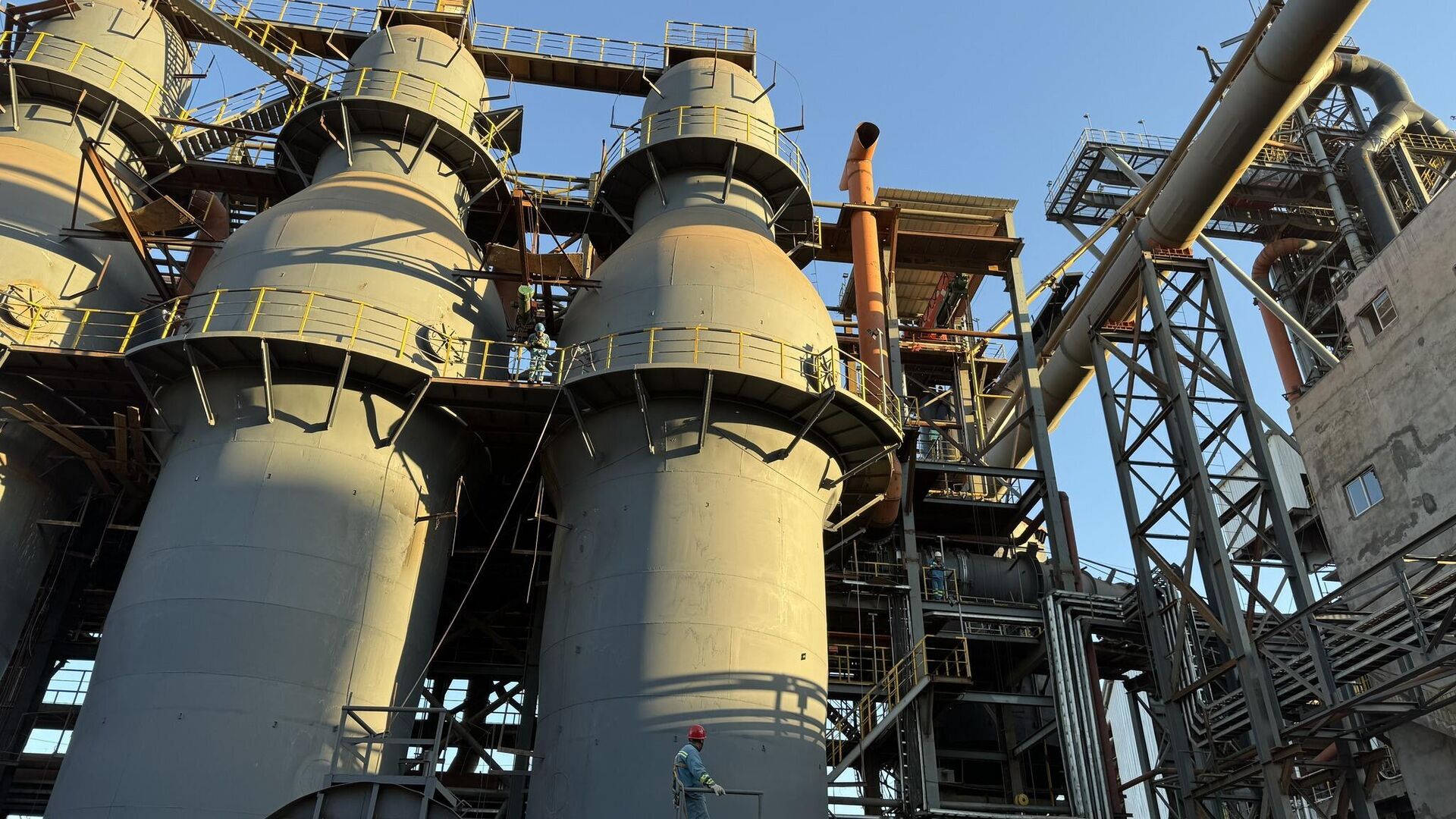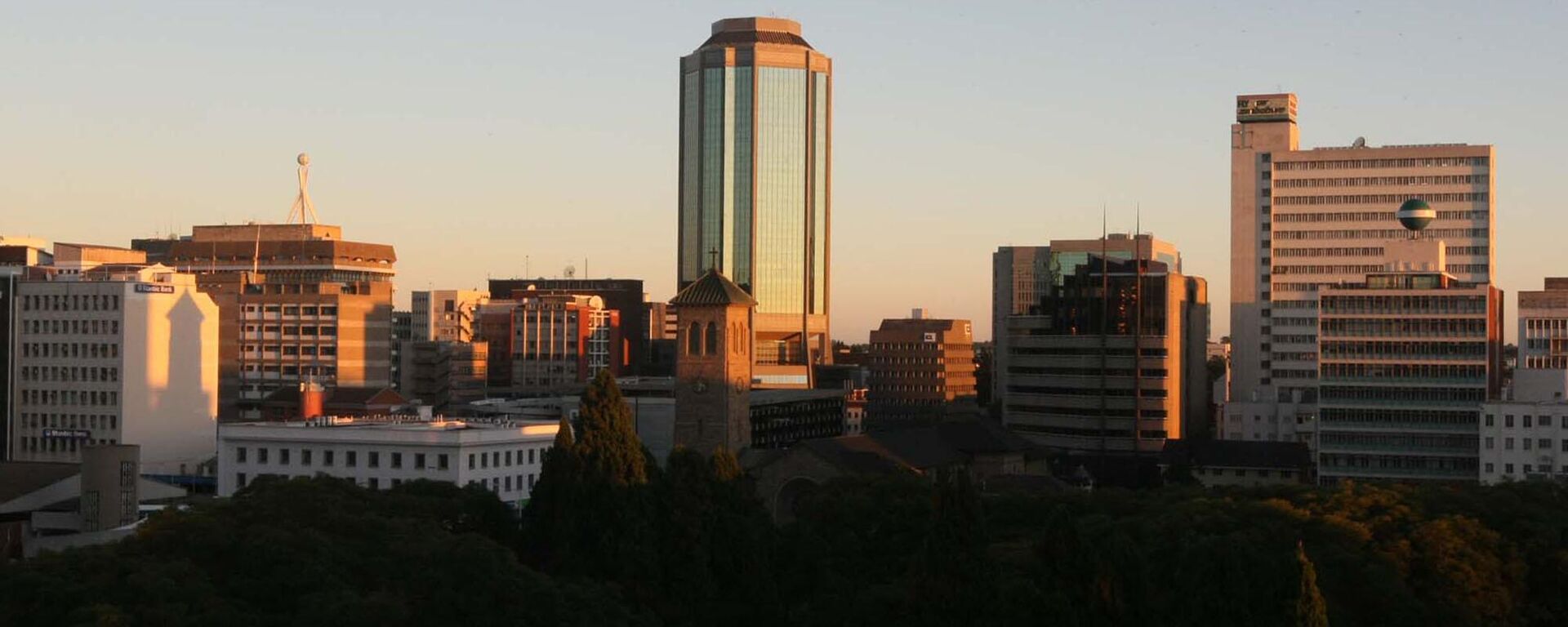https://en.sputniknews.africa/20240527/to-make-zimbabwe-africas-top-steel-producer-manhize-plant-ready-to-start-operations-in-june-1066758037.html
To Make Zimbabwe 'Africa's Top Steel Producer': Manhize Plant Ready to Start Operations in June
To Make Zimbabwe 'Africa's Top Steel Producer': Manhize Plant Ready to Start Operations in June
Sputnik Africa
Zimbabwe was once a regional steel giant, but after the closure of state-owned Zisco in 2008, the country shifted from manufacturing to importing steel and... 27.05.2024, Sputnik Africa
2024-05-27T12:22+0200
2024-05-27T12:22+0200
2024-05-27T12:22+0200
sub-saharan africa
zimbabwe
southern africa
steel
economy
infrastructure
industry
https://cdn1.img.sputniknews.africa/img/07e8/05/1b/1066759120_0:192:2048:1344_1920x0_80_0_0_1a5cc48ea3c2a7479d6095d552bcb2ab.jpg
Zimbabwe's $1.5 billion Manhize steel plant, which could make the country the largest producer in Africa, is ready to start operations as tests have gone well, Joseph Shoko, the public relations manager for the Chinese Dinson Iron and Steel Company (Disco), the owner of the plant, told local media.Tests were carried out on five key components of the plant, and they were found to be operational and ready for production: thermal power plants, a blast furnace, a sinter plant, a limestone processing plant, and an oxygen plant. Construction of an electrical substation was also completed.In preparation for the start of production, staff quarters, warehouses and other key infrastructure have also been built.Moreover, more than 1,500 workers are already employed at the Manhize plant, and 7,000 jobs are expected to be created when the project is fully implemented, with the number of workers in both the mining and processing industries rising to 20,000.Shoko also said that Disco's production volume will steadily increase from 600,000 tonnes in the first phase to five million tonnes per year in the final phase.Furthermore, the company can now independently produce 70 megawatts of electricity to power its operations.In addition to the fact that the plant can make the country the biggest steel producer, it itself is one of the largest facility in the country, with a workshop area of 3.5 hectares, which can be useful for a number of industries.The Plant Will Benefit Not Only Industrial SectorThe plant will contribute to the creation of a new 2,300-hectare smart city for which a roadmap has already been developed, local media reported, citing Shingirayi Mushamba, the Chief Director for Spatial Planning and Development at the Ministry of Local Government and Public Works. The enterprise promised "substantial support" in providing the city with external and internal infrastructure.Furthermore, Mushamba reportedly said that to improve transport connectivity and in the spirit of corporate social responsibility, Disco had upgraded the Manhize-Mavise road and built a bridge over the Munyati River.The last but not the least important benefit of the plant is the support of the residents living near it. Most of them are farmers, and the plant provides a ready market for their products, the media reported.
https://en.sputniknews.africa/20240522/zimbabwes-development-sets-example-for-region-as-sadc-praises-progress-despite-sanctions-1066678403.html
zimbabwe
southern africa
Sputnik Africa
feedback@sputniknews.com
+74956456601
MIA „Rossiya Segodnya“
2024
Christina Glazkova
https://cdn1.img.sputniknews.africa/img/07e7/0b/07/1063380906_0:0:673:674_100x100_80_0_0_79628b4d0cd9f29291a57aa13bbf9e7a.jpg
Christina Glazkova
https://cdn1.img.sputniknews.africa/img/07e7/0b/07/1063380906_0:0:673:674_100x100_80_0_0_79628b4d0cd9f29291a57aa13bbf9e7a.jpg
News
en_EN
Sputnik Africa
feedback@sputniknews.com
+74956456601
MIA „Rossiya Segodnya“
Sputnik Africa
feedback@sputniknews.com
+74956456601
MIA „Rossiya Segodnya“
Christina Glazkova
https://cdn1.img.sputniknews.africa/img/07e7/0b/07/1063380906_0:0:673:674_100x100_80_0_0_79628b4d0cd9f29291a57aa13bbf9e7a.jpg
zimbabwe, southern africa, steel, economy, infrastructure, industry
zimbabwe, southern africa, steel, economy, infrastructure, industry
To Make Zimbabwe 'Africa's Top Steel Producer': Manhize Plant Ready to Start Operations in June
Christina Glazkova
Writer / Editor
Zimbabwe was once a regional steel giant, but after the closure of state-owned Zisco in 2008, the country shifted from manufacturing to importing steel and iron products. However, the new Manhize plant is expected to drastically change the situation.
Zimbabwe's $1.5 billion Manhize steel plant, which could make the country the largest producer in Africa, is ready to start operations as tests have gone well, Joseph Shoko, the public relations manager for the Chinese Dinson Iron and
Steel Company (Disco), the owner of the plant, told local media.
"We are expecting to start production in early to mid-June. The market is waiting for us. We have had many inquiries from several countries in the region. However, the local market, which imports almost 100% of our steel, especially from South Africa, is more important," he said.
Tests were carried out on five key components of the plant, and they were found to be operational and ready for production: thermal power plants, a blast furnace, a sinter plant, a limestone processing plant, and an oxygen plant. Construction of an electrical substation was also completed.
In preparation for the start of production, staff quarters, warehouses and other key infrastructure have also been built.
Moreover, more than 1,500 workers are already employed at the Manhize plant, and
7,000 jobs are expected to be created when the project is fully implemented, with the number of
workers in both the mining and processing industries rising to 20,000.
Shoko also said that Disco's production volume will steadily increase from 600,000 tonnes in the first phase to five million tonnes per year in the final phase.
Furthermore, the company can now independently produce 70 megawatts of
electricity to power its operations.
"We have also completed construction of the 88 kV power line from Sherwood Block in Kwekwe [city]. Already, we are energizing the whole plant using this conventional power. We are not ending there. We envisage establishing another 400 kV because this blast furnace is one of the total of six we expect to have at full capacity," Shoko said.
In addition to the fact that the plant can make the country the biggest steel producer, it itself is one of the largest facility in the country, with a workshop area of 3.5 hectares, which can be useful for a number of industries.
"It’s a workshop that can produce many products. [...] We are ready to contribute to megaprojects like the Gwayi-Shangani Dam construction. Our workshop is going to be useful for local authorities, farmers and irrigation companies. The workshop will be at the nation’s disposal to provide fabrication services, machining and various products. We have already started producing items such as screws and hammers at the workshop," Disco’s administration manager, Wang Xiang Kai, told the local media outlet.
The Plant Will Benefit Not Only Industrial Sector
The plant will contribute to the creation of a new 2,300-hectare
smart city for which a roadmap has already been developed, local media reported, citing Shingirayi Mushamba, the Chief Director for Spatial Planning and Development at the Ministry of Local Government and Public Works. The enterprise promised "substantial support" in providing the city with external and internal infrastructure.
Furthermore, Mushamba reportedly said that to
improve transport connectivity and in the spirit of corporate social responsibility, Disco had upgraded the Manhize-Mavise road and built a bridge over the Munyati River.
The last but not the least important benefit of the plant is the support of the residents living near it. Most of them are
farmers, and the plant provides a ready market for their products, the media reported.



